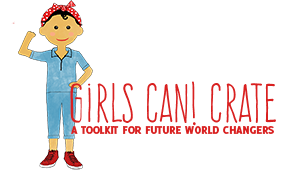The Fourth of July is a day characterized by BBQs, fireworks, and time with friends and family. It’s also a day when we remember our nation’s founders. We find ourselves speaking names like George Washington, Paul Revere, and Alexander Hamilton. But, what about names like Lydia Darragh, Phillis Wheatley, or Margaret Corbin? Women contributed mightily to the path to freedom from British rule, and not just on the home front; they worked as spies, alerted Continental troops, placed their name on copies of the Declaration of Independence, and fought for freedom from slavery. Some of these women were women of influence, some had been stolen from their country of birth, and some just wanted to be a part of something bigger than themselves. These are names that I wish I'd learned about in school. These are just a few of the badass women of the Revolutionary War.
Abigail Adams
Abigail Adams: Before she was the First Lady, Abigail Adams supplied the troops stationed near her Boston Harbor home with ammunition. When Abigail learned the troops were out of bullets, she collected all the silver and steel from her home and melted it down for soldiers. Years later, when her husband John Adams was the US’ second president, Abigail was one of the first women to fight for women’s suffrage and was as an unofficial advisor to her President-husband. She wrote to her husband, pleading that he “Remember the Ladies, and be more generous and favourable to them than your ancestors. Do not put such unlimited power into the hands of the Husbands. Remember all Men would be tyrants if they could.”
Elizabeth Freeman
Elizabeth Freeman: Born into slavery, Elizabeth was said to be a woman of strong conviction and was characterized as someone who had a strong sense of self. In 1780, inspired by the words from the newly ratified Massachusetts Constitution that "all men are born free and equal...," Elizabeth brought forth a lawsuit challenging the constitutionality of slavery in Massachusetts. She won and was set free. After the ruling, Elizabeth changed her last name to Freeman.
Lydia Darragh: The Philadelphia home of Lydia Darragh was often used as a gathering place for British officers. During their meetings, Lydia hid in a closet adjoining the room where they met. She then smuggled the information she overheard to her son who was serving in the Continental Army. The intelligence gathered included plans for a surprise attack against American forces at White Marsh in November 1777. The warning gave the Colonial army time to prepare and fight off the attack. With the British retreating back to Philadelphia, the Continental Army was able to successfully reach its winter quarters at Valley Forge. Because Lydia was a pacifist, nobody ever suspected that she might be a spy.
Phillis Wheatley
Phillis Wheatley: Phillis was stolen from her home in Gambia and brought to the United States as a slave. The family she was sold to recognized Phillis' intelligence and educated her. Soon, she began to compose her own poetry. She published her first poem at age 13 and became the first Black woman and third woman to publish a book of poetry. She was freed from slavery in 1773. In 1775, Phillis wrote several poems in support of George Washington and the colonies' cause for freedom. She sent the future president one of her poems and was invited to meet him at his home in Cambridge in 1776.
Mary Katherine Goddard's name on copies of the Declaration of Independence
Mary Katherine Goddard: Mary was the first female publisher. Her newspaper routinely 'scooped' other papers with stories of Revolutionary War battles, like the Battle of Bunker Hill, and she herself was threatened and her offices were raided twice. In 1777, Congress asked Mary to print copies of the Declaration of Independence. Yes, other copies of the document had been printed, but these copies included all the names of its signers, an act of treason punishable by death. Do you know whose name was also placed on those copies? That's right, Mary Katherine Goddard included her own name on the bottom of all the copies that she made and distributed throughout the colonies.
Margaret Corbin
Margaret Cochran Corbin: When her husband left for war, Margaret followed him and became a camp follower. She earned money cooking and doing laundry for soldiers while also helping to take care of the sick and wounded.
On November 16, 1776, Margaret dressed as a man and joined her husband in the Battle of Fort Washington on Manhattan Island. She helped him load his cannon. When he was killed, she took over firing the cannon against the British. Other soldiers commented on “Captain Molly’s” steady aim and sure-shot. Eventually, however, she, too, was hit by enemy fire, and was wounded. She was unable to use her left arm for the rest of her life.
After she recovered, Margaret joined the Invalid Regiment at West Point, where she aided the wounded until she was formerly discharged in 1783. Then, on July 6, 1779, the Continental Congress, in recognition of her brave service, awarded her with a lifelong pension equivalent to half that of male combatants.
How amazing were these women?! This is just a small list of the ladies who worked with the hopes of a better nation and we encourage you to dig deeper into the contributions of women. These were women who believed so strongly in the cause, but I would bet that these ladies didn't understand the importance of their contributions. Today, more than 200 years later we know that without them, and countless other women, we may not be celebrating the Fourth of July.





